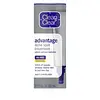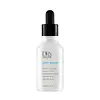What's inside
What's inside
 Key Ingredients
Key Ingredients

 Benefits
Benefits

 Concerns
Concerns

 Ingredients Side-by-side
Ingredients Side-by-side

Salicylic Acid 2%
MaskingAlcohol Denat.
AntimicrobialWater
Skin ConditioningHamamelis Virginiana Water
AstringentPolyacrylamide
Glycerin
HumectantCyclopentasiloxane
EmollientC13-14 Isoparaffin
EmollientC12-15 Alkyl Lactate
EmollientAlcohol
AntimicrobialPhenoxyethanol
PreservativeCetyl Lactate
EmollientPPG-2 Isoceteth-20 Acetate
EmulsifyingCocamidopropyl Pg-Dimonium Chloride Phosphate
Laureth-7
EmulsifyingPolysorbate 20
EmulsifyingPhenethyl Dimethicone
EmollientParfum
MaskingDehydroxanthan Gum
Emulsion StabilisingPropylene Glycol
HumectantBenzalkonium Chloride
AntimicrobialAmmonia
BufferingTetrasodium EDTA
Butylene Glycol
HumectantCapryloyl Glycine
CleansingSarcosine
Skin ConditioningCinnamomum Zeylanicum Bark Extract
AntimicrobialCedrus Atlantica Bark Extract
PerfumingPortulaca Oleracea Extract
Skin ConditioningSalicylic Acid 2%, Alcohol Denat., Water, Hamamelis Virginiana Water, Polyacrylamide, Glycerin, Cyclopentasiloxane, C13-14 Isoparaffin, C12-15 Alkyl Lactate, Alcohol, Phenoxyethanol, Cetyl Lactate, PPG-2 Isoceteth-20 Acetate, Cocamidopropyl Pg-Dimonium Chloride Phosphate, Laureth-7, Polysorbate 20, Phenethyl Dimethicone, Parfum, Dehydroxanthan Gum, Propylene Glycol, Benzalkonium Chloride, Ammonia, Tetrasodium EDTA, Butylene Glycol, Capryloyl Glycine, Sarcosine, Cinnamomum Zeylanicum Bark Extract, Cedrus Atlantica Bark Extract, Portulaca Oleracea Extract
Water
Skin ConditioningPropylene Glycol
HumectantAlcohol
AntimicrobialButylene Glycol
HumectantEthoxydiglycol
HumectantPolysorbate 20
EmulsifyingPEG-40 Hydrogenated Castor Oil
EmulsifyingGlycerin
Humectant4-Terpineol
MaskingPanthenol
Skin ConditioningSodium Lactate
BufferingSalicylic Acid
MaskingEthylhexylglycerin
Skin ConditioningAloe Barbadensis Leaf Juice
Skin ConditioningT-Butyl Alcohol
PerfumingArctium Majus Root Extract
Skin ConditioningSalvia Officinalis Leaf Extract
CleansingNasturtium Officinale Extract
PerfumingCitrus Limon Peel Extract
EmollientFucus Vesiculosus Extract
EmollientSaponaria Officinalis Leaf/Root Extract
Skin ConditioningHedera Helix Leaf Extract
Skin ConditioningDenatonium Benzoate
MaskingPhenoxyethanol
PreservativeChlorphenesin
AntimicrobialPotassium Sorbate
PreservativeSodium Benzoate
MaskingWater, Propylene Glycol, Alcohol, Butylene Glycol, Ethoxydiglycol, Polysorbate 20, PEG-40 Hydrogenated Castor Oil, Glycerin, 4-Terpineol, Panthenol, Sodium Lactate, Salicylic Acid, Ethylhexylglycerin, Aloe Barbadensis Leaf Juice, T-Butyl Alcohol, Arctium Majus Root Extract, Salvia Officinalis Leaf Extract, Nasturtium Officinale Extract, Citrus Limon Peel Extract, Fucus Vesiculosus Extract, Saponaria Officinalis Leaf/Root Extract, Hedera Helix Leaf Extract, Denatonium Benzoate, Phenoxyethanol, Chlorphenesin, Potassium Sorbate, Sodium Benzoate
 Reviews
Reviews

Ingredients Explained
These ingredients are found in both products.
Ingredients higher up in an ingredient list are typically present in a larger amount.
Alcohol comes in many different forms. Different types of alcohol will have different effects on skin. This ingredient is usually an astringent alcohol.
These alcohols are drying on the skin. They may strip away your skin's natural oils and even damage your skin barrier. Astringent alcohols may also irritate skin.
Other types of astringent alcohols include:
According to the National Rosacea Society based in the US, you should be mindful of products with these alcohols in the top half of ingredients.
Any type of sanitizing product will have high amounts of alcohol to help kill bacteria and viruses.
Fatty alcohols come from plant oils such as coconut oil. These can help hydrate the skin and are non-irritating. Some fatty alcohols include cetyl and stearyl alcohol.
Learn more about AlcoholButylene Glycol (or BG) is used within cosmetic products for a few different reasons:
Overall, Butylene Glycol is a safe and well-rounded ingredient that works well with other ingredients.
Though this ingredient works well with most skin types, some people with sensitive skin may experience a reaction such as allergic rashes, closed comedones, or itchiness.
Learn more about Butylene GlycolGlycerin is already naturally found in your skin. It helps moisturize and protect your skin.
A study from 2016 found glycerin to be more effective as a humectant than AHAs and hyaluronic acid.
As a humectant, it helps the skin stay hydrated by pulling moisture to your skin. The low molecular weight of glycerin allows it to pull moisture into the deeper layers of your skin.
Hydrated skin improves your skin barrier; Your skin barrier helps protect against irritants and bacteria.
Glycerin has also been found to have antimicrobial and antiviral properties. Due to these properties, glycerin is often used in wound and burn treatments.
In cosmetics, glycerin is usually derived from plants such as soybean or palm. However, it can also be sourced from animals, such as tallow or animal fat.
This ingredient is organic, colorless, odorless, and non-toxic.
Glycerin is the name for this ingredient in American English. British English uses Glycerol/Glycerine.
Learn more about GlycerinPhenoxyethanol is a preservative that has germicide, antimicrobial, and aromatic properties. Studies show that phenoxyethanol can prevent microbial growth. By itself, it has a scent that is similar to that of a rose.
It's often used in formulations along with Caprylyl Glycol to preserve the shelf life of products.
Polysorbate 20 is made by combining ethoxylation of sorbitan, ethylene oxide, and lauric acid. It is a mild cleansing agent, surfactant, and emulsifier.
As a surfactant, it helps collect dirt and oils for washing. Emulsifiers prevent oils and water from separating.
Polysorbate 20 also adds scent to a product. Since it is made using sorbitol, it has a sweet scent. Sorbitol can also be found in fruits such as apples and peaches.
The lauric acid used to create Polysorbate 20 is often derived from coconuts.
Polysorbate 20 may not be fungal acne safe.
Learn more about Polysorbate 20Propylene Glycol is an odorless, colorless liquid. As a humectant, it helps skin retain moisture. It also aids in delivering active ingredients.
Another role of this ingredient is preventing a product from melting or freezing. Propylene glycol also adds antimicrobrial properties to a product, elongating product lifespan.
This ingredient is considered an organic alcohol and commonly added into both cosmetics and foods.
Those with sensitive skin or conditions may develop a rash when using this ingredient.
Learn more about Propylene GlycolSalicylic Acid (also known as beta hydroxy acid or BHA) is a well-known ingredient for treating skin that struggles with acne and clogged pores. It exfoliates both the skin's surface and deep within the pores to help clear out buildup, control oil, and reduce inflammation.
Unlike AHAs (alpha hydroxy acids), salicylic acid is oil-soluble. This allows it to penetrate into pores which makes it especially effective for treating blackheads and preventing future breakouts.
Salicylic acid is also known for its soothing properties. It has a similar structure to aspirin and can calm inflamed or irritated skin, making it a good option for acne-prone skin that is also sensitive.
Concentrations of 0.5-2% are recognized by the U.S. FDA as an over-the-counter topical acne product.
It can cause irritation and/or dryness if one's skin already has a compromised moisture barrier, so it's best to focus on repairing that before introducing this ingredient into your routine.
While salicylic acid does not increase sun sensitivity, it’s still important to wear sunscreen daily to protect your skin.
If you are looking for the ingredient called BHA or Butylated Hydroxyanisole, click here.
Learn more about Salicylic AcidWater. It's the most common cosmetic ingredient of all. You'll usually see it at the top of ingredient lists, meaning that it makes up the largest part of the product.
So why is it so popular? Water most often acts as a solvent - this means that it helps dissolve other ingredients into the formulation.
You'll also recognize water as that liquid we all need to stay alive. If you see this, drink a glass of water. Stay hydrated!
Learn more about Water